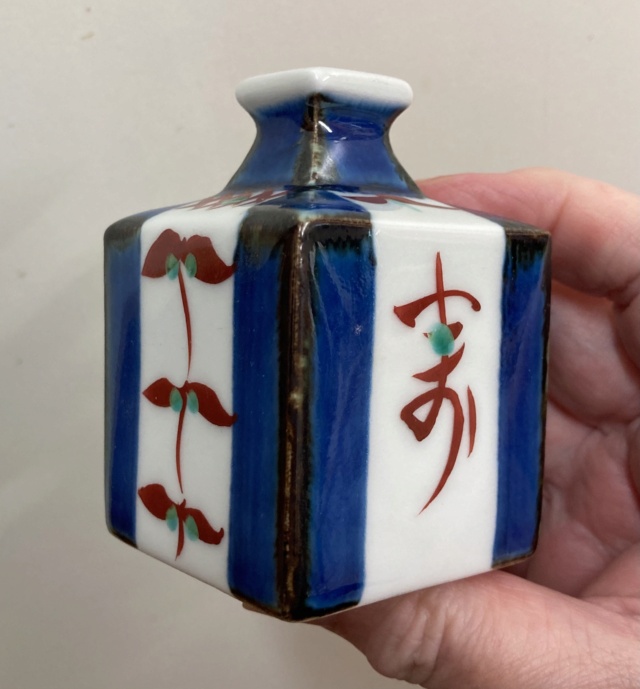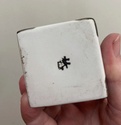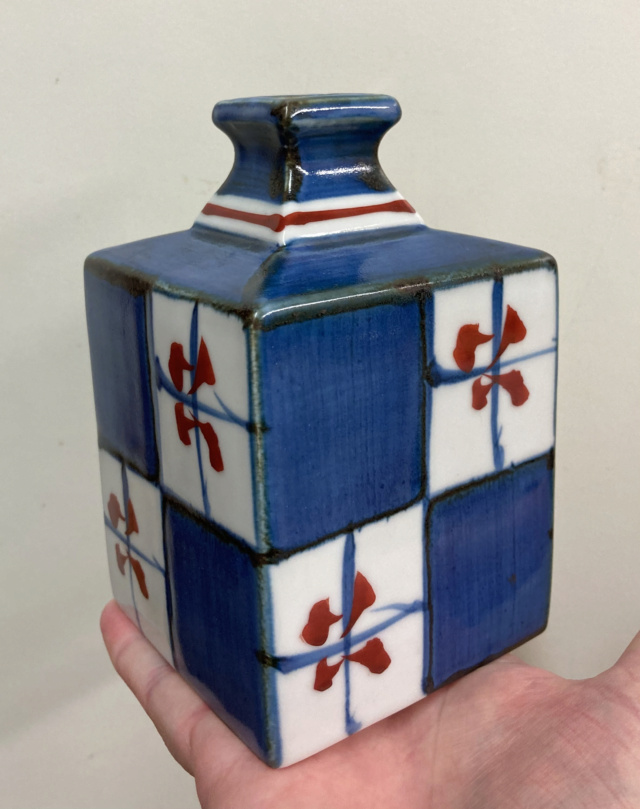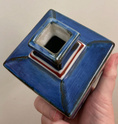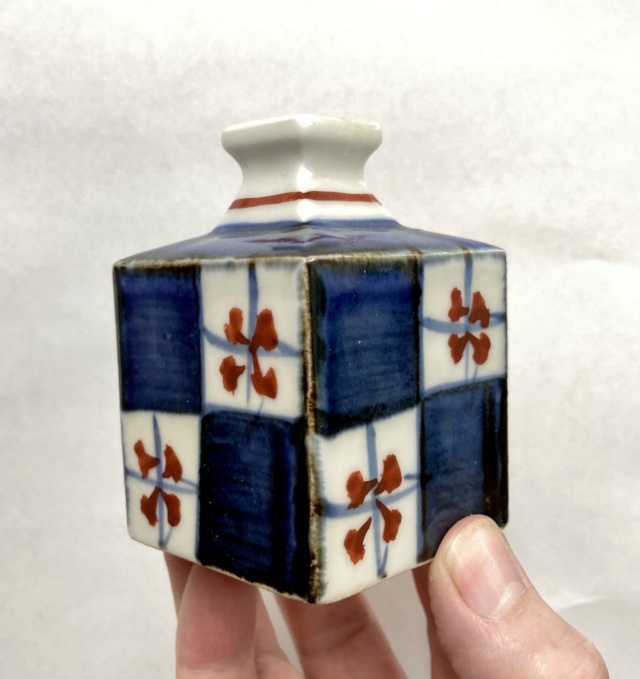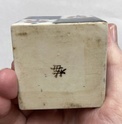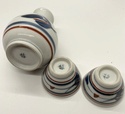Tobe Pottery
2 posters
20th Century Forum :: Pottery Identification / Research :: Far Eastern Pottery :: Japanese & Korean Studio Pottery
Page 1 of 1
 Tobe Pottery
Tobe Pottery
Last edited by NaomiM on Wed Mar 22, 2023 8:41 pm; edited 2 times in total
_________________
Carrot cake is just fake cake
 Re: Tobe Pottery
Re: Tobe Pottery
The Baizan Studio is the oldest studio in Tobe and was opened in 1882 by Masagoro Umeno and that is where the kiln name of Umeyama comes from.
Tobe Pottery had almost died out by the 1950s but was championed by Shoji Hamada, Muneyoshi Yanagi and Bernard Leach, who visited and publicised Tobe yaki in 1953. This revived pottery production in the area and by 1976 it was designated as a "National Traditional Craft" by the Japanese government. Today there are around 90 studios and 450 potters practising.
Basically it is porcelain and, traditional decoration, if done, is indigo blue brush work (from cobalt ore + a little manganese).
It was the Baizan Studio that Leach visited in 1953 and the then director, Takenosuke Umeno, took the decision that they would start making high quality hand formed and decorated tableware there.
To this day it seems to be the place where young potters do their apprenticeship and some then go on to open their own studios.
There was a small selling exhibition of Tobe pottery in London something like 10 years ago and the work from the Baizan Studio (Umeyama kiln) was the only work that had the dark red brushwork shown above. Therefore it seems to fit.
Tobe Pottery had almost died out by the 1950s but was championed by Shoji Hamada, Muneyoshi Yanagi and Bernard Leach, who visited and publicised Tobe yaki in 1953. This revived pottery production in the area and by 1976 it was designated as a "National Traditional Craft" by the Japanese government. Today there are around 90 studios and 450 potters practising.
Basically it is porcelain and, traditional decoration, if done, is indigo blue brush work (from cobalt ore + a little manganese).
It was the Baizan Studio that Leach visited in 1953 and the then director, Takenosuke Umeno, took the decision that they would start making high quality hand formed and decorated tableware there.
To this day it seems to be the place where young potters do their apprenticeship and some then go on to open their own studios.
There was a small selling exhibition of Tobe pottery in London something like 10 years ago and the work from the Baizan Studio (Umeyama kiln) was the only work that had the dark red brushwork shown above. Therefore it seems to fit.
_________________
Now you should know by now that Potty and I need to see your bottom - we're funny that way!
 Re: Tobe Pottery
Re: Tobe Pottery
Sakai Yoshito was born in 1931 and was one of the original potters who began modern day porcelain production in Tobe. He was made an Important Human Cultural Treasure of Ehime Prefecture in 1999 and is officially recognised by the Japanese government as a Japanese Traditional Craftsman. His work has been displayed and won awards at Issuikai, Nihon Togei Ten, Nihon Dento Kogei Ten and Nitten, where he won the prestigious Mombudaijin award. It also forms part of the V&A Museum collection in London.
This porcelain guinomi does not appear to have been used but from the colouration of the box it would appear to be thirty or so years old.
This porcelain guinomi does not appear to have been used but from the colouration of the box it would appear to be thirty or so years old.
_________________
Now you should know by now that Potty and I need to see your bottom - we're funny that way!
 Re: Tobe Pottery
Re: Tobe Pottery
_________________
Now you should know by now that Potty and I need to see your bottom - we're funny that way!
20th Century Forum :: Pottery Identification / Research :: Far Eastern Pottery :: Japanese & Korean Studio Pottery
Page 1 of 1
Permissions in this forum:
You cannot reply to topics in this forum
